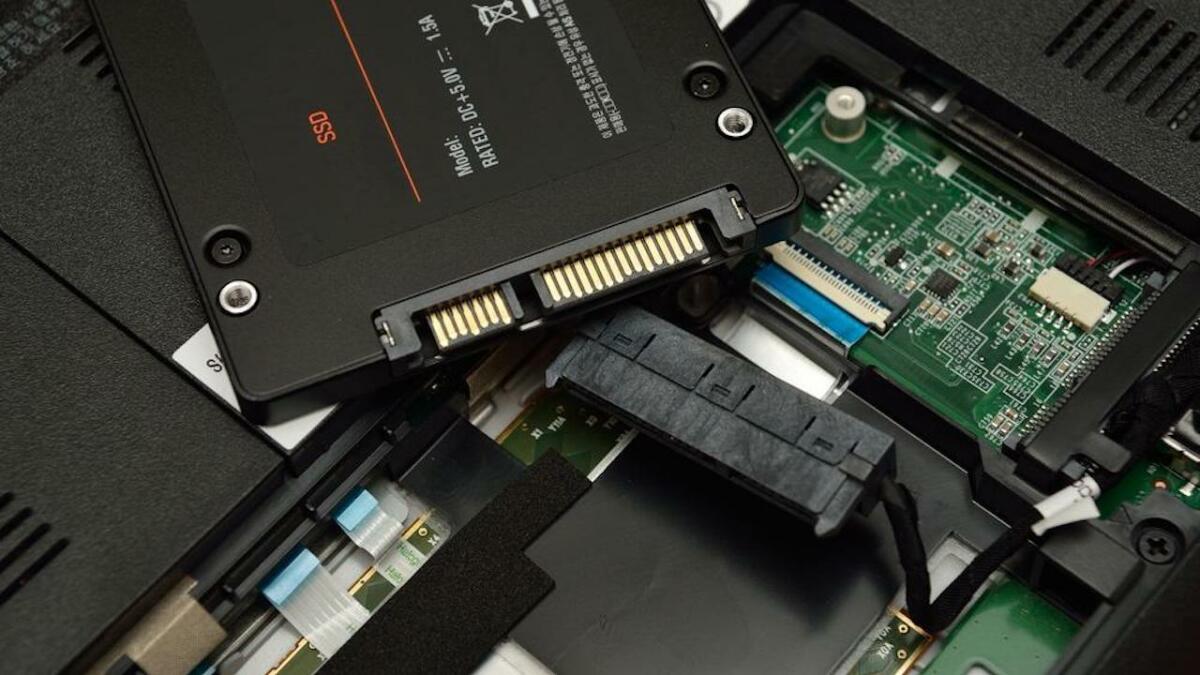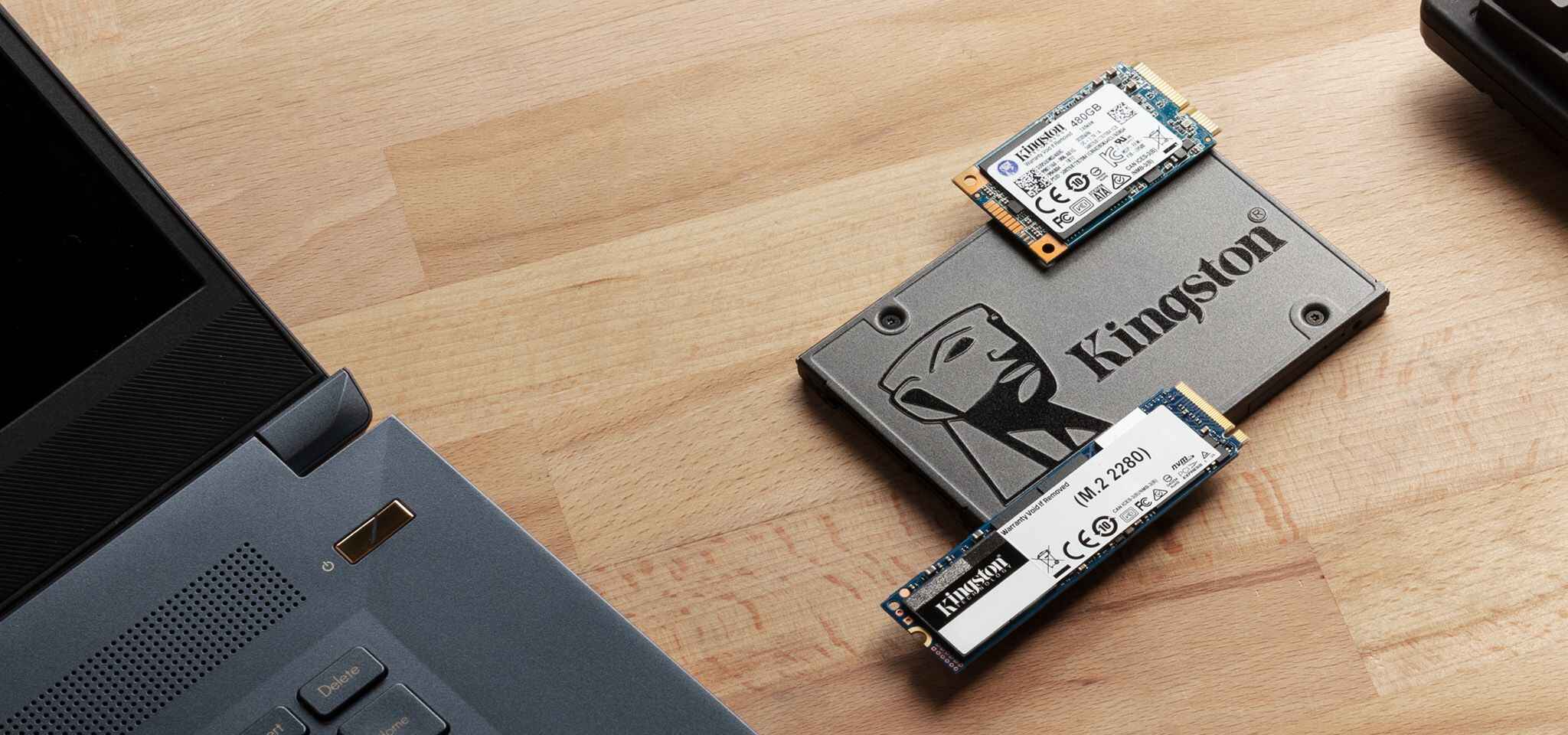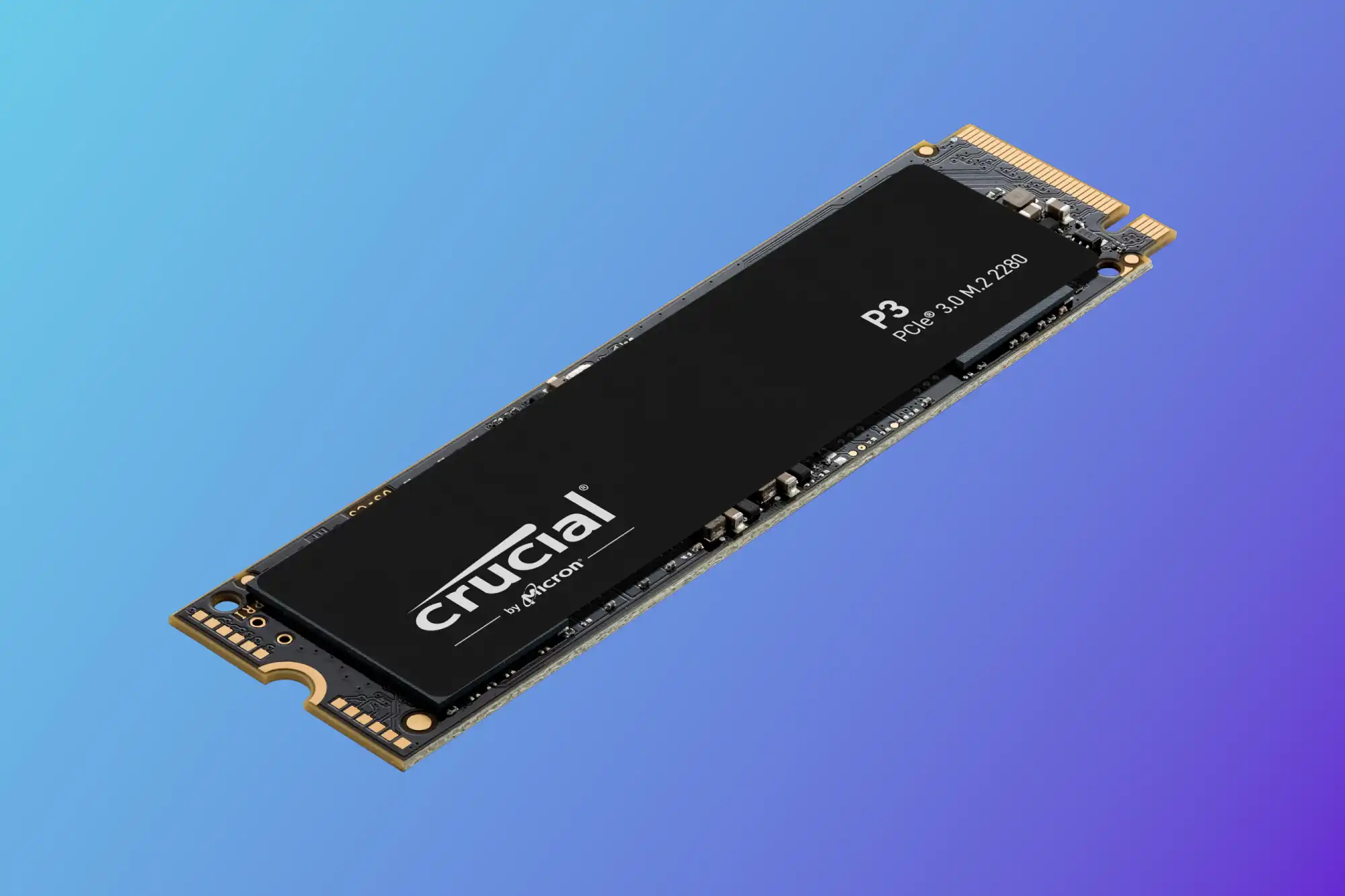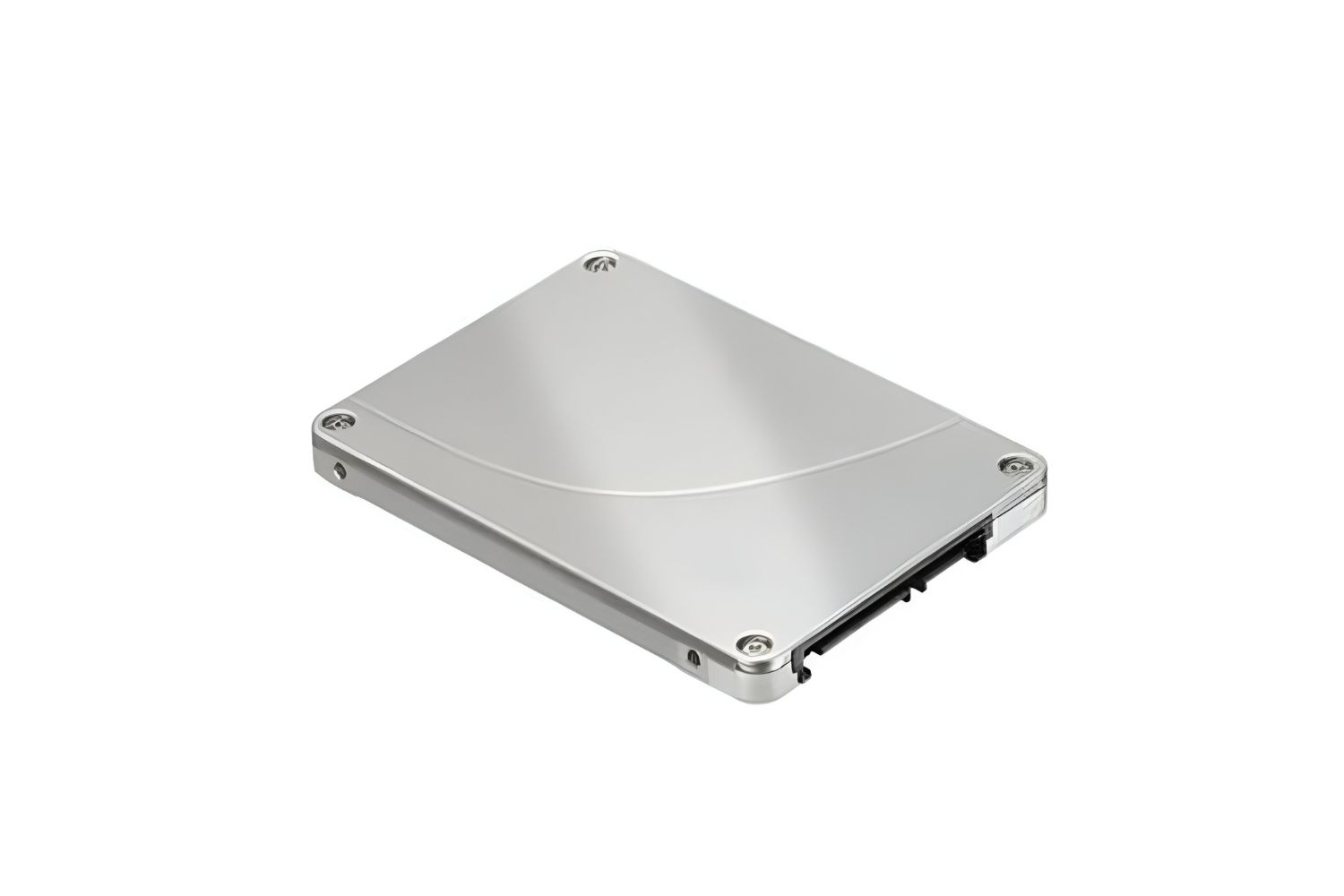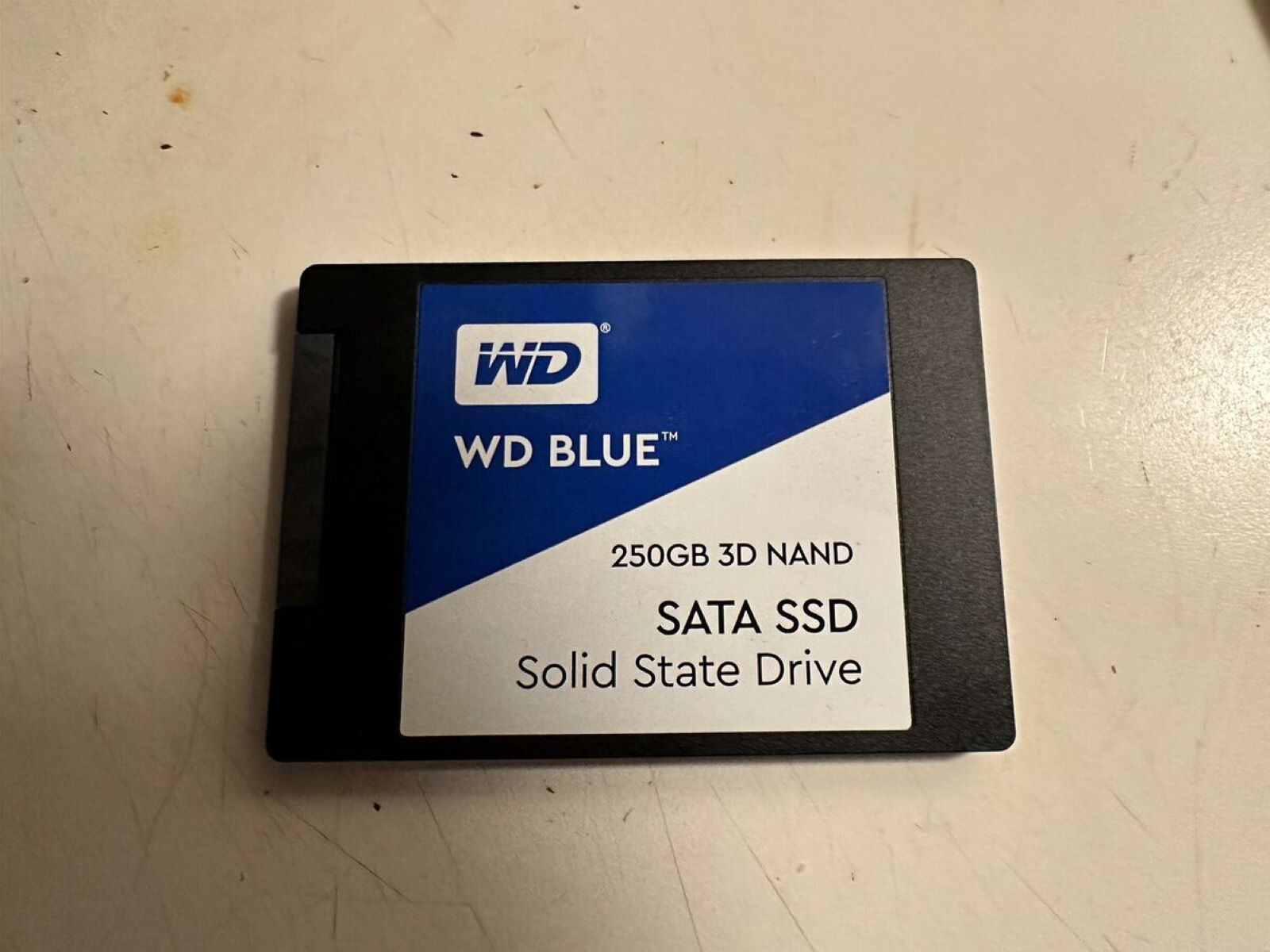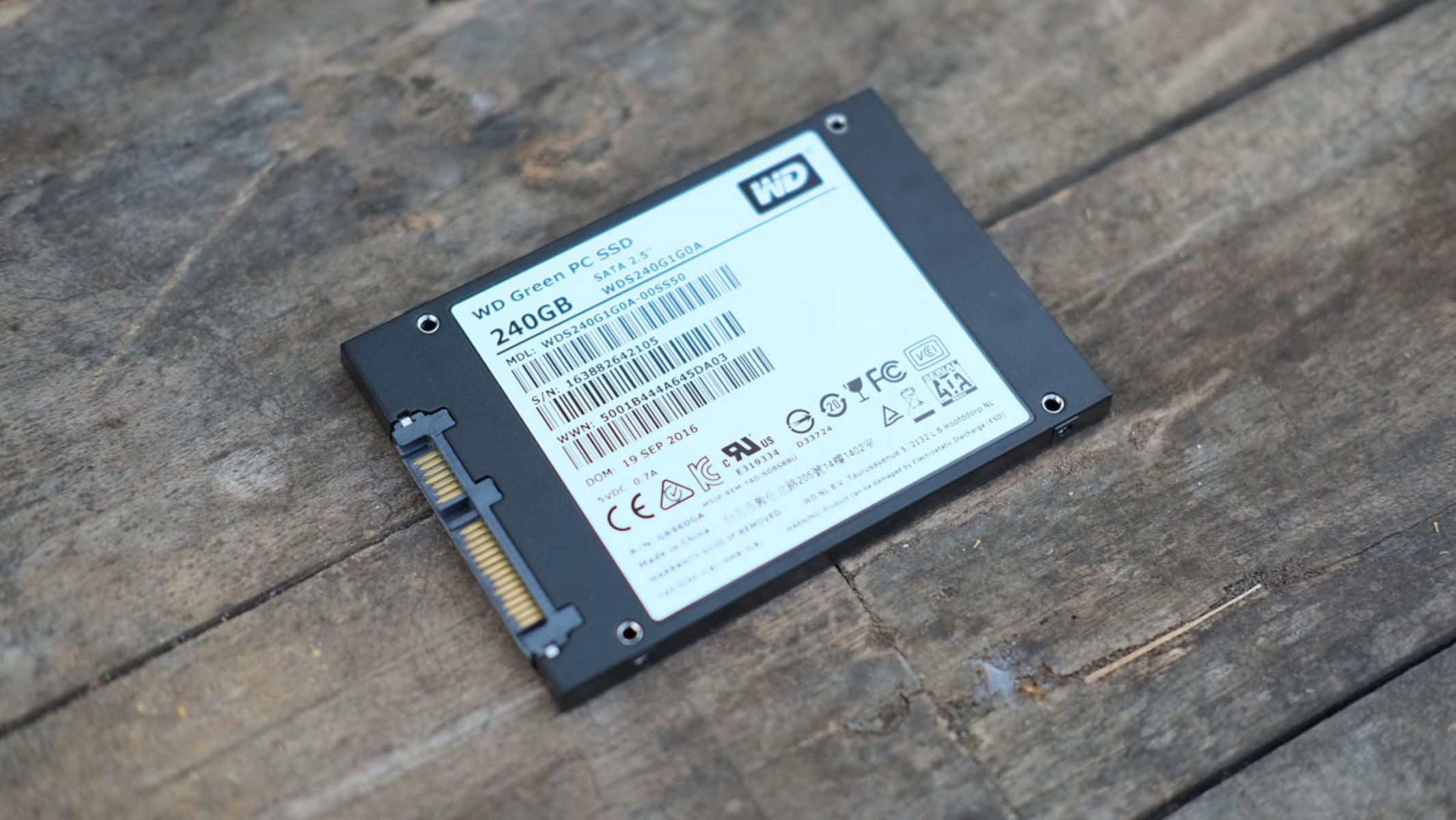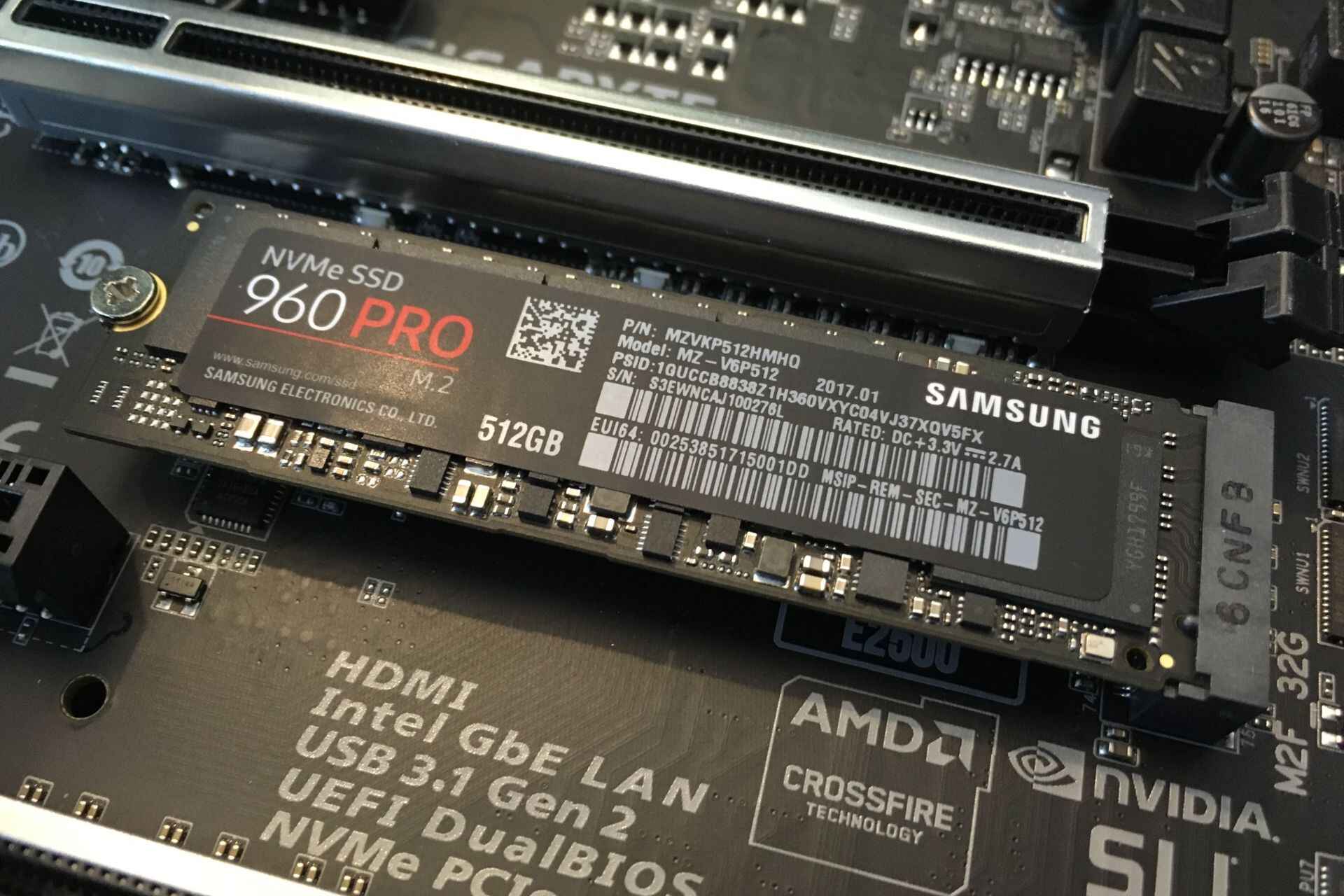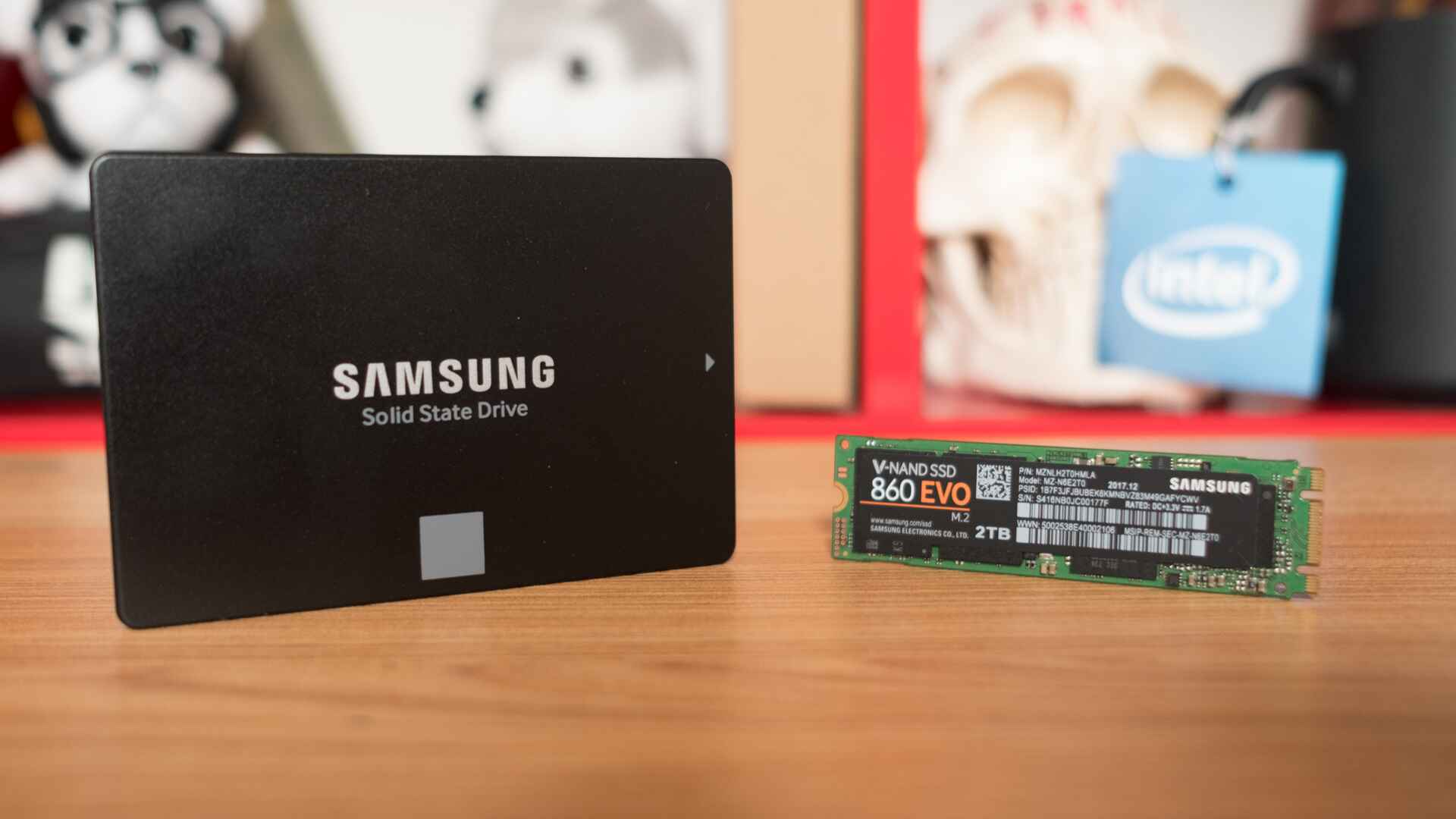Faster Boot Times
One of the key benefits of using a solid-state drive (SSD) is the significantly faster boot times it offers over traditional hard disk drives (HDDs). When you power on your computer, the operating system needs to load and initialize various components. With an SSD, this process is expedited, resulting in a quicker startup.
Unlike HDDs, which rely on spinning magnetic disks to read and write data, SSDs use flash memory technology. This enables them to access and retrieve data at lightning-fast speeds, as there are no mechanical components involved. As a result, the time taken to boot up your system is significantly reduced.
With an SSD, your computer can go from being powered off to fully operational in a matter of seconds. This means you can get to work or start browsing the web without having to wait for your system to finish starting up. Whether you’re a professional who needs to quickly access files or a home user looking for a hassle-free computing experience, faster boot times can greatly enhance your productivity and convenience.
In addition to the time saved, faster boot times also contribute to a smoother overall user experience. With an SSD, you won’t have to deal with the frustratingly long wait times typically associated with older HDDs. Instead, you’ll be able to dive right into your tasks, allowing you to be more efficient and focused.
Furthermore, faster boot times are especially beneficial for laptop users. When you’re on the go, the ability to start up your laptop quickly is essential. SSDs enable you to get up and running in no time, allowing you to make the most of your precious battery life.
To summarize, the use of an SSD in your computer significantly improves boot times by eliminating mechanical components and leveraging flash memory technology. This results in faster startup speeds, enabling you to save time, be more productive, and enjoy a seamless computing experience.
Improved File Transfer Speeds
An SSD offers remarkable improvements in file transfer speeds compared to traditional hard disk drives (HDDs). Whether you’re copying files, moving data between folders, or performing backups, the increased transfer speed of an SSD can significantly reduce the time it takes to complete these tasks.
The key advantage of SSDs lies in their ability to access and retrieve data at an incredibly high speed. Unlike HDDs, which have mechanical components and spinning disks, SSDs utilize flash memory technology to store and retrieve data. This eliminates the need for physical movement, resulting in faster and more efficient file transfers.
Whether you’re working with large multimedia files, transferring documents, or managing a vast library of photos, the faster file transfer speeds of an SSD can save you valuable time. You’ll spend less time waiting for files to copy or move, allowing you to be more productive and efficient in your work.
Additionally, improved file transfer speeds are particularly beneficial for creative professionals working with large media files. Video editors, photographers, graphic designers, and other multimedia enthusiasts will appreciate the speedy transfer of their data between different storage locations or devices. This ensures that their workflow remains uninterrupted and helps them meet strict deadlines.
Moreover, the swift file transfer speeds of an SSD can also enhance your gaming experience. With modern games becoming increasingly larger in size, having an SSD can significantly reduce the time it takes to install or update games. This means less time spent waiting and more time enjoying your favorite games.
It’s worth noting that the improved file transfer speeds aren’t limited to just large files. Even everyday tasks, such as loading documents or accessing small files, can benefit from the SSD’s speedy performance. This ensures a smooth and efficient workflow, enabling you to seamlessly navigate through your digital workspace.
To sum it up, an SSD’s improved file transfer speeds revolutionize the way data is moved and managed. With faster access times and efficient retrieval of files, you’ll experience significant time savings in various file-related tasks. Whether you’re a professional or a casual user, the enhanced transfer speeds of an SSD will undoubtedly enhance your productivity and overall computing experience.
Faster Application Launch Times
If you’ve ever experienced the frustration of waiting for applications to load, then you’ll appreciate the significant improvement in application launch times that a solid-state drive (SSD) provides. With an SSD, you can enjoy blazingly fast application launches, ensuring a seamless and efficient computing experience.
The speed advantage of SSDs lies in their ability to access and retrieve data at lightning-fast speeds. Unlike traditional hard disk drives (HDDs) that have mechanical components and spinning disks, SSDs utilize flash memory technology, which eliminates any physical movement. As a result, applications stored on an SSD can be accessed and loaded much quicker than those stored on an HDD.
When launching applications, whether it’s a productivity tool, photo editing software, or a resource-intensive gaming application, an SSD can significantly reduce the waiting time. With an SSD, you’ll experience near-instantaneous application launches, allowing you to start working or playing without any delay or interruption.
This is particularly beneficial for professionals who rely on resource-hungry applications, such as graphic designers, video editors, or architects. With faster application launch times, these professionals can save valuable time and increase productivity by quickly accessing and using their software tools.
In addition, faster application launch times also enhance the overall user experience for casual users. Whether you’re browsing the web, listening to music, or using productivity apps, an SSD ensures that you can swiftly open and switch between your favorite programs and tasks. This helps you stay focused and engaged while minimizing unnecessary waiting periods.
Furthermore, for gamers, faster application launch times can make a significant difference. Whether you’re launching a game or loading a previously saved state, the speed of an SSD can reduce loading times, allowing you to get into the action quicker. This means less time spent waiting and more time enjoying your gaming experience.
Overall, the use of an SSD results in dramatically faster application launch times, reducing waiting periods and enhancing productivity. Whether you’re a professional with demanding software needs or a casual user looking for a smoother computing experience, an SSD is a game-changer when it comes to launching applications quickly and efficiently.
Reduced Latency
An often overlooked advantage of using a solid-state drive (SSD) is the significantly reduced latency compared to traditional hard disk drives (HDDs). Latency refers to the delay between a command being issued and the data being accessed or retrieved. With an SSD, this delay is greatly minimized, resulting in a more responsive and seamless computing experience.
The reduced latency of SSDs is a direct result of their design and technology. Unlike HDDs, which rely on mechanical components and spinning disks to read and write data, SSDs utilize flash memory technology. This means that there are no moving parts involved, enabling data to be accessed and retrieved virtually instantaneously.
When performing tasks such as file searches, opening applications, or accessing data stored on the drive, an SSD’s low latency ensures that the system responds quickly. This reduces any lag or delay and provides a more fluid and efficient user experience.
Reduced latency is particularly beneficial for professionals who rely on speedy data access, such as database administrators, software developers, and content creators. With an SSD, these professionals can access and manipulate data without the frustrating delays that can impede productivity.
In addition to professional use, reduced latency also enhances everyday tasks for casual users. Whether you’re browsing the web, streaming media, or multitasking between various applications, an SSD’s low latency ensures that you can perform these tasks smoothly and without any noticeable delay.
Gamers, in particular, can benefit greatly from reduced latency. When it comes to online gaming or fast-paced action games, even the slightest delay can be a disadvantage. An SSD’s minimal latency ensures that game response times are snappy, allowing players to be more competitive and immersed in the gaming experience.
Furthermore, reduced latency contributes to a more efficient multitasking experience. With an SSD, switching between applications, opening multiple tabs, or working with multiple files simultaneously becomes much smoother. This allows you to work faster and more effectively, without being hindered by delays or performance bottlenecks.
In summary, an SSD’s reduced latency offers a significant improvement over HDDs, resulting in a more responsive and efficient computing experience. Whether you’re a professional performing data-intensive tasks or a casual user seeking smoother everyday computing, an SSD’s low latency ensures that your system responds quickly and enhances productivity.
Increased System Responsiveness
One of the key advantages of using a solid-state drive (SSD) is the increased system responsiveness it offers over traditional hard disk drives (HDDs). When it comes to performing everyday tasks and navigating your computer’s operating system, an SSD delivers a noticeable improvement in speed and responsiveness.
The enhanced system responsiveness of an SSD is primarily due to its superior read and write speeds. Unlike HDDs, which rely on spinning disks and mechanical components, SSDs utilize flash memory technology. This allows them to quickly access and retrieve data, resulting in faster overall system performance.
Whether you’re opening applications, accessing files, or performing other routine tasks, an SSD ensures that your system responds swiftly. The improved read and write speeds mean that you’ll experience minimal delays or lag when executing commands, resulting in a more seamless and efficient user experience.
With an SSD, you’ll notice an immediate improvement in system boot times. Your computer will start up in a matter of seconds, allowing you to quickly get to work without having to endure a lengthy waiting period. This is especially beneficial for professionals who need to access their files and applications promptly.
In addition to faster boot times, an SSD also contributes to speedier application launches. Opening software tools, productivity applications, or multimedia editing software becomes almost instantaneous, ensuring that you can dive right into your tasks without any delays.
The increased system responsiveness provided by an SSD is particularly noticeable during multitasking. Whether you’re working with numerous applications simultaneously or switching between tasks, an SSD allows for a seamless transition and minimal performance impact. You’ll experience smoother workflow and reduced waiting times when navigating between different programs or processes.
Furthermore, for gamers, increased system responsiveness can greatly enhance the gaming experience. With faster load times, reduced input lag, and smoother overall performance, an SSD ensures that you’re always one step ahead in your gaming adventures.
Overall, the increased system responsiveness offered by an SSD transforms your computing experience. Faster boot times, quick application launches, and smoother multitasking contribute to a more productive and efficient workflow. Whether you’re a professional or casual user, an SSD’s improved system responsiveness will undoubtedly elevate your computing experience.
Better Multitasking Performance
A solid-state drive (SSD) provides a significant advantage when it comes to multitasking, allowing you to work with multiple applications and processes simultaneously without a noticeable slowdown in performance. The superior multitasking capabilities of an SSD make it an ideal choice for professionals who require seamless multitasking or individuals who regularly handle multiple tasks on their computer.
Traditional hard disk drives (HDDs) rely on mechanical components and spinning disks to access and retrieve data, which can result in performance bottlenecks when multiple tasks are being executed simultaneously. However, SSDs utilize flash memory technology, enabling them to handle multiple read and write operations simultaneously with ease.
With an SSD, you can switch between applications, open multiple tabs in web browsers, and work with large files without experiencing a significant decrease in performance. The enhanced multitasking performance ensures that you can seamlessly navigate through your tasks without waiting for applications to load or files to open.
Professionals who engage in data-intensive work, such as video editing, 3D modeling, or software development, can benefit greatly from the better multitasking performance of an SSD. These tasks often require the use of multiple resource-intensive software applications, and with an SSD, you can work without any noticeable lag or delays.
Additionally, the improved multitasking performance of an SSD contributes to a smoother and more efficient workflow for everyday tasks. Whether you’re working on a document while listening to music, running multiple virtual machines, or performing data analysis, an SSD ensures that your system can handle it all without any performance hiccups.
Furthermore, gamers can also enjoy better multitasking performance with an SSD. Whether you’re running the game, live streaming, and chatting with teammates, or opening multiple instances of resource-intensive games, an SSD allows for faster load times and smoother overall gameplay. This means you can engage in multitasking without sacrificing gaming performance.
In summary, the better multitasking performance of an SSD is a game-changer for professionals and casual users alike. You can seamlessly switch between applications, work with multiple tasks simultaneously, and experience minimal slowdowns or delays. With an SSD, multitasking becomes a breeze, allowing you to work efficiently and maximize your productivity.
Improved Gaming Performance
When it comes to gaming, having an edge in performance can make all the difference. A solid-state drive (SSD) offers a significant improvement in gaming performance, allowing for faster load times, smoother gameplay, and an overall enhanced gaming experience.
One of the main advantages of an SSD in gaming is the faster load times it provides. Games stored on an SSD can load much quicker compared to traditional hard disk drives (HDDs). This means you’ll spend less time waiting for games to load and more time playing.
With an SSD, you’ll experience reduced load times when starting a game, loading a new level, or respawning after death. This can be particularly beneficial in competitive gaming, where every second counts. Being able to load into a game faster ensures that you’re ready to take action while your opponents are still loading.
In addition to faster load times, an SSD contributes to smoother gameplay. The improved read and write speeds of an SSD enable the game to access and retrieve data more quickly. This results in minimal stutters and reduced lag, providing a more responsive gaming experience.
SSDs are especially beneficial for open-world games or those with large game worlds. These types of games often require frequent loading and streaming of data as you explore the virtual world. With an SSD, you’ll experience seamless transitions between different areas without delays or interruptions.
Furthermore, an SSD can improve the performance of games that rely heavily on streaming assets, such as high-resolution textures or detailed environments. When textures or objects need to be loaded on the fly, an SSD’s quick access to data ensures that these assets are available in a timely manner, resulting in a visually immersive gaming experience.
Multiplayer gamers can also benefit from using an SSD. Quick load times mean you can join game sessions faster, reducing the chances of missing out on competitive matches or time-sensitive events. Additionally, an SSD can provide a smoother online gaming experience by minimizing latency issues, ensuring that your actions are registered quickly in online matches.
Overall, an SSD’s improved gaming performance enhances your overall gaming experience by reducing load times, minimizing stuttering and lag, and providing a more seamless and responsive gameplay. Whether you’re a casual gamer or a competitive esports player, an SSD can give you a significant advantage and make your gaming sessions more enjoyable and immersive.
Longer Battery Life
One often overlooked advantage of using a solid-state drive (SSD) is its positive impact on battery life. When it comes to mobile devices such as laptops, tablets, and smartphones, an SSD can significantly extend the battery life, allowing you to work or play on the go for longer durations.
Compared to traditional hard disk drives (HDDs), SSDs consume less power during operation. This is because SSDs don’t rely on mechanical components or spinning disks, which require a significant amount of power to function. The flash memory technology used in SSDs is more energy-efficient, resulting in lower power consumption.
The reduced power consumption of an SSD translates into longer battery life for your mobile devices. Whether you’re working on important tasks while traveling or enjoying entertainment on your device, a longer battery life means you can keep going without the need for frequent recharging.
With an SSD, you’ll experience improved energy efficiency, allowing you to get more done on a single battery charge. This is especially beneficial for professionals who rely on their devices for extended periods. From business travelers to students, an extended battery life ensures that you can stay productive without interruptions.
In addition, longer battery life can greatly enhance the convenience and enjoyment of entertainment activities on mobile devices. Whether you’re streaming movies, playing games, or listening to music, you can indulge in these activities for longer periods without having to worry about your battery running out.
Furthermore, the improved performance of an SSD can indirectly contribute to longer battery life. SSDs have faster read and write speeds, which means that your device can complete tasks more quickly. This leads to reduced processing time, resulting in lower power consumption overall.
It’s important to note that while using an SSD can increase battery life, the actual duration will depend on various factors, including the specific device, usage patterns, and power management settings. However, the transition from an HDD to an SSD is generally associated with noticeable improvements in battery performance.
In summary, an SSD’s lower power consumption and increased energy efficiency result in longer battery life for your mobile devices. Whether you’re a professional constantly on the go or a casual user seeking extended entertainment time, an SSD ensures that you can rely on your device for longer durations without the need for frequent recharging.
Enhanced Data Security
Data security is a top priority for individuals and businesses alike. One significant advantage of using a solid-state drive (SSD) is the enhanced data security it provides compared to traditional hard disk drives (HDDs). With an SSD, you can have peace of mind knowing that your sensitive data is better protected.
SSDs offer several features that contribute to enhanced data security. One of the key features is encryption. Many SSDs come with built-in hardware encryption capabilities, allowing you to encrypt your data at the drive level. This means that even if your SSD falls into the wrong hands, your data remains encrypted and inaccessible without the proper decryption key.
Compared to software-based encryption, which can sometimes impact performance, hardware-based encryption offered by SSDs has minimal impact on read and write speeds. This means you can enjoy the benefits of enhanced data security without sacrificing overall system performance.
In addition to encryption, SSDs also offer improved resistance to physical shocks and vibrations. Unlike HDDs, which have mechanical components and spinning disks, SSDs do not have moving parts. This makes them less susceptible to damage from drops, bumps, or vibrations, which can potentially lead to data loss in HDDs.
Moreover, SSDs have a lower risk of failure due to mechanical issues. HDDs are prone to failure due to disk fragmentation, bad sectors, or wear and tear on mechanical components. SSDs, on the other hand, have a longer lifespan and are less prone to such mechanical failures, reducing the chances of data loss.
Another advantage of SSDs when it comes to data security is their resistance to magnetic fields. HDDs can be vulnerable to magnetic fields, potentially causing data corruption or loss. With an SSD, you don’t have to worry about magnetic interference affecting your data integrity.
It’s important to note that while SSDs offer enhanced data security features, it is still essential to practice safe data management and follow best practices for data protection. This includes regularly backing up your data, using strong passwords, and employing additional security measures such as antivirus software and firewalls.
In summary, an SSD provides enhanced data security through features such as hardware-based encryption, increased resistance to physical shocks and vibrations, and reduced risk of mechanical failure. By choosing an SSD for your storage needs, you can enhance the security of your data and ensure its confidentiality and integrity.
Quieter Operation
When it comes to noise levels, solid-state drives (SSDs) offer a significant advantage over traditional hard disk drives (HDDs). One of the key benefits of using an SSD is its quieter operation, providing a more peaceful and disturbance-free computing experience.
HDDs consist of mechanical components and spinning disks, which can generate a significant amount of noise as the disks spin and the read/write heads move. This noise can be noticeable, especially during heavy disk activity or when the drive is working on a task that requires frequent data access.
In contrast, SSDs do not have any moving parts. Instead, they utilize flash memory technology that allows for silent operation. Without any mechanical components to generate noise, SSDs provide a quieter computing environment.
The absence of noise from an SSD is especially beneficial for individuals who work in quiet environments or those who prefer a noise-free experience such as students in libraries or professionals working in noise-sensitive industries like audio recording or film editing.
In addition, the quieter operation of SSDs can improve the overall user experience. When your computer operates silently, it creates a more pleasant and immersive environment, allowing you to focus on your tasks without unnecessary distractions. Whether you’re working, gaming, or simply browsing the web, the absence of noisy disk activity enhances your concentration and enjoyment.
Furthermore, for laptop users, the quieter operating SSDs can make a significant difference. When your laptop operates silently, it promotes a more peaceful and comfortable working environment, whether you’re in a coffee shop, a meeting, or a library. Plus, the reduced noise levels can also enhance communication during video conferences or presentations.
For individuals who prefer a quiet and peaceful computing environment, or those who need to work or relax without disruptive noises, SSDs offer a significant advantage over HDDs. The silencing of traditional mechanical noise ensures that your computer operates smoothly and silently, allowing you to focus on your tasks and enjoy your computing experience to the fullest.
Durability and Reliability
When it comes to durability and reliability, solid-state drives (SSDs) have a significant advantage over traditional hard disk drives (HDDs). The robust construction and absence of mechanical components in SSDs make them highly durable and reliable storage solutions.
Unlike HDDs, which consist of spinning disks and read/write heads that are prone to failure, SSDs use flash memory technology that does not have any moving parts. This structural difference eliminates the vulnerabilities associated with mechanical components, making SSDs more resistant to physical damage from shocks, drops, or vibrations.
In addition to their physical durability, SSDs also exhibit a higher level of stability and reliability in data storage and retrieval. With no rotating disks, there is no risk of mechanical failures or data corruption due to disk fragmentation or bad sectors, as commonly observed in HDDs.
Furthermore, the lack of moving parts in SSDs also contributes to their improved resistance to wear and tear. In an HDD, the read/write heads physically come into contact with the spinning disks, leading to potential disk wear over time. In contrast, SSDs have no such physical contact, resulting in extended lifespan and increased reliability.
SSDs are engineered to have a longer operational lifespan compared to traditional HDDs. The usage of flash memory cells in an SSD allows for a high number of read/write cycles before any performance degradation occurs. This means that an SSD can withstand years of use without significant loss in performance or storage capacity.
Moreover, the durability and reliability of SSDs also translate into improved data integrity. The advanced error correction algorithms implemented in SSDs minimize data corruption, ensuring that your files and data remain intact and accessible over time.
For individuals and businesses, the durability and reliability of SSDs offer valuable advantages. Whether you’re a professional working on critical projects or an individual who wants to protect your important data, you can rely on SSDs to provide a more resilient storage solution.
With their remarkable durability, absence of mechanical failures, and extended lifespan, SSDs offer a higher level of data protection and peace of mind. By choosing an SSD as your storage device, you can ensure the safety and integrity of your valuable data for years to come.







